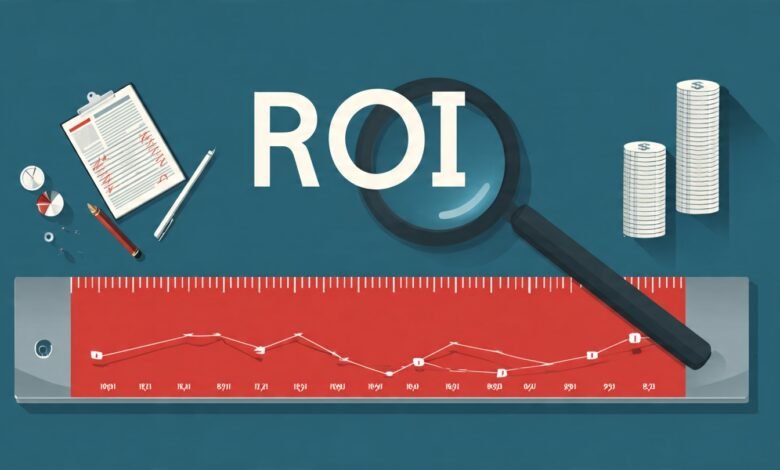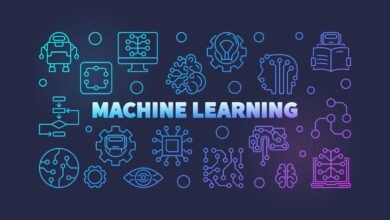
In today’s rapidly evolving digital landscape, artificial intelligence has transitioned from a futuristic concept to a business imperative. Organizations across industries are investing billions in AI technologies, from machine learning algorithms to generative AI solutions. However, as these investments surge, a critical question emerges: How do you measure the actual value and return on investment (ROI) from AI initiatives? According to recent industry reports, nearly 49% of organizations struggle to estimate and demonstrate the value of their AI projects, making AI ROI measurement one of the most pressing challenges in digital transformation.
Calculating AI ROI isn’t as straightforward as traditional technology investments. Unlike conventional software implementations, AI systems evolve, learn, and improve over time, making their benefits both immediate and long-term. The complexity increases when you consider that AI impacts multiple dimensions of business operations—from operational efficiency and cost reduction to customer experience enhancement and revenue generation. Moreover, many AI benefits are intangible, such as improved decision-making capabilities, enhanced brand reputation, and increased organizational agility.
This comprehensive guide demystifies the process of measuring AI return on investment. Whether you’re a C-suite executive evaluating AI implementation costs, a data science leader tracking AI performance metrics, or a financial analyst calculating hard numbers, this article provides actionable frameworks and proven methodologies. We’ll explore the fundamental ROI formula, distinguish between hard and soft returns, identify critical key performance indicators (KPIs), and address common challenges in AI ROI calculation. You’ll discover practical strategies to establish baseline metrics, track tangible and intangible benefits, and communicate AI value to stakeholders effectively. By mastering these AI investment measurement techniques, you’ll transform AI from a cost center into a quantifiable driver of business value, ensuring your organization maximizes returns while making data-driven decisions about future AI investments.
AI ROI The Fundamentals
What Is AI Return on Investment?
AI return on investment represents the financial and operational value generated from artificial intelligence implementations relative to the total costs incurred. At its core, ROI is a financial ratio that compares an investment’s gain or loss to its cost. When applied to AI projects, this metric helps organizations determine whether their AI investments deliver sufficient value to justify continued funding and expansion.
The basic ROI formula remains consistent across applications: (Benefits – Costs) / Costs × 100. However, AI ROI calculation demands a more nuanced approach than traditional technology investments. The benefits of AI systems often materialize gradually, evolving as algorithms learn from data and improve performance. Additionally, AI benefits extend beyond immediate cost savings to include strategic advantages like competitive differentiation, innovation capability, and market responsiveness.
The Unique Challenges of Measuring AI ROI
Measuring AI ROI presents several distinct challenges that differentiate it from conventional investment measurement. First, there’s a significant time discrepancy between investment and returns. While costs are incurred upfront—including software licenses, infrastructure, integration, and training—the benefits often accrue over extended periods as AI models mature and adapt.
Second, AI projects generate both tangible and intangible returns. Tangible benefits include quantifiable metrics like reduced operational costs, increased sales, or decreased processing time. Intangible benefits encompass improved employee satisfaction, enhanced customer experience, better decision-making quality, and increased brand value. Organizations must develop frameworks that capture both dimensions to assess true AI ROI accurately.
Third, data quality significantly impacts ROI calculations. Poor data quality can undermine even the most sophisticated AI algorithms, leading to inaccurate predictions, flawed insights, and diminished returns. Organizations must factor data infrastructure investments and ongoing data governance costs into their AI ROI measurement frameworks.
Hard ROI vs. Soft ROI in AI Investments
The distinction between hard and soft ROI is crucial for comprehensive AI investment evaluation. Hard ROI focuses on quantifiable monetary gains directly attributable to AI implementation. These include cost reduction through automation, revenue increases from improved sales predictions, fraud prevention savings, and decreased customer acquisition costs. Hard ROI metrics provide concrete numbers that resonate with financial stakeholders and justify budget allocations.
Soft ROI, conversely, encompasses less tangible but equally valuable benefits. These include enhanced employee retention and satisfaction, improved skill development within teams, strengthened brand reputation, increased organizational agility, and better risk management. While harder to quantify, soft ROI often drives long-term competitive advantages and organizational resilience. Leading organizations adopt balanced scorecards that incorporate both hard and soft ROI metrics, ensuring comprehensive evaluation of AI value creation.
The AI ROI Calculation Formula
Essential Components of the ROI Formula
- Calculating AI ROI requires identifying and quantifying all relevant costs and benefits. The standard formula—(Net Benefits / Total Costs) × 100—provides a percentage that indicates return efficiency. A positive ROI indicates a profitable investment, while negative values signal losses. However, the real challenge lies in accurately determining net benefits and total costs for AI initiatives.
- Total costs encompass multiple categories. Initial investments include software licenses, hardware infrastructure, cloud computing resources, and AI platform subscriptions. Implementation costs cover system integration, data migration, testing, and deployment. Personnel expenses include salaries for data scientists, AI engineers, and project managers. Ongoing costs involve maintenance, updates, support contracts, and continuous training data acquisition. Organizations must track these expenses meticulously to ensure accurate ROI calculations.
- Net benefits calculation requires establishing baseline performance metrics before AI implementation. This baseline serves as the comparison point for measuring improvements. Benefits may include labor cost savings from automation, increased revenue from improved recommendations, reduced error rates in processes, faster decision-making cycles, and decreased customer churn. Organizations should measure benefits over consistent timeframes, typically annually, to enable meaningful ROI comparisons.
Step-by-Step ROI Calculation Process
Implementing a structured ROI calculation process ensures consistency and accuracy. Begin by defining clear objectives for your AI project. Establish specific, measurable goals aligned with business priorities, such as reducing customer service response time by 40% or increasing sales conversion rates by 15%.
Next, identify and document all cost components. Create comprehensive budgets covering initial investments, implementation expenses, personnel costs, and ongoing operational expenditures. Include hidden costs like training time, change management initiatives, and potential system disruptions during implementation.
Establish baseline metrics across all relevant KPIs before AI deployment. Document current performance levels for metrics like processing time, error rates, customer satisfaction scores, and operational costs. These baselines provide the foundation for measuring AI-driven improvements.
Set a realistic evaluation timeframe. AI systems typically require three to six months to stabilize and demonstrate meaningful results. Allow sufficient time for algorithms to learn, adapt, and optimize before conducting comprehensive ROI assessments.
Collect performance data systematically throughout the evaluation period. Track improvements in established KPIs, documenting changes in operational efficiency, revenue generation, cost reduction, and customer experience metrics. Calculate net benefits by subtracting pre-AI baseline values from post-AI performance metrics, then monetizing these improvements.
Finally, apply the ROI formula: subtract total costs from net benefits, divide by total costs, and multiply by 100 to express as a percentage. For example, if an AI chatbot implementation costs $200,000 and generates $350,000 in annual benefits through reduced support staff needs and improved customer satisfaction, the ROI equals (($350,000 – $200,000) / $200,000) × 100 = 75%.
Time-Based ROI Considerations
AI ROI varies significantly across different timeframes. Short-term ROI (0-12 months) often appears modest or even negative as organizations absorb implementation costs while AI systems mature. Medium-term ROI (1-3 years) typically shows positive returns as AI models optimize and operational benefits accumulate. Long-term ROI (3+ years) can be substantial, particularly for AI investments that drive strategic transformation and competitive advantages.
Organizations should calculate ROI at multiple intervals to understand value creation trajectories. Quarterly assessments identify optimization opportunities, while annual evaluations provide comprehensive performance overviews. Multi-year analyses reveal strategic impact and inform decisions about scaling AI initiatives. This temporal perspective helps manage stakeholder expectations and demonstrates AI value realization over time.
Key Performance Indicators for AI ROI

Financial Metrics and KPIs
- Financial KPIs provide quantifiable measures of AI economic impact. Cost savings metrics track reductions in operational expenses, including decreased labor costs through automation, reduced error-correction expenses, and lower customer service expenditures. Revenue generation KPIs measure increases in sales from improved recommendations, enhanced pricing optimization, and better customer targeting.
- Cost avoidance represents another critical financial metric. AI systems that prevent fraud, identify security threats, or predict equipment failures generate value by avoiding potential losses. Organizations should quantify these preventive benefits by estimating costs that would have been incurred without AI intervention.
- Productivity metrics translate time savings into financial value. Calculate the monetary value of hours saved through automation, faster decision-making, or improved process efficiency. Multiply time savings by average hourly labor costs to quantify productivity ROI. Additionally, track AI-driven improvements in resource utilization, capacity optimization, and operational throughput.
Operational Efficiency Indicators
- Operational efficiency KPIs measure how AI improves business processes. Process cycle time reduction indicates faster completion of tasks, from customer onboarding to order fulfillment. Error rate reduction demonstrates improved accuracy in data processing, predictions, or automated decisions. Throughput increases show enhanced capacity to handle transactions, customer interactions, or production volumes.
- AI automation rate measures the percentage of tasks completed without human intervention. Higher automation rates typically correlate with greater ROI, particularly for repetitive, high-volume processes. Track automation progression over time to demonstrate AI maturity and increasing value delivery.
- Resource optimization metrics evaluate how AI improves asset utilization. This includes server capacity optimization, inventory management improvements, workforce scheduling efficiency, and supply chain optimization. These KPIs reveal operational excellence gains attributable to AI implementation.
Customer Experience Metrics
- Customer-centric KPIs measure AI’s impact on satisfaction and loyalty. Net Promoter Score (NPS) changes indicate whether AI-enhanced experiences improve customer advocacy. Customer Satisfaction (CSAT) scores reveal satisfaction with AI-powered interactions like chatbots or recommendation engines.
- Customer churn reduction represents a high-value metric. Retaining existing customers is typically more cost-effective than acquiring new ones, making churn prevention particularly valuable. Calculate the financial impact by multiplying the reduced churn percentage by the customer lifetime value.
- First contact resolution rates measure AI efficiency in addressing customer needs. AI chatbots and virtual assistants that resolve queries without human escalation reduce support costs while improving customer satisfaction. Response time improvements similarly demonstrate AI value in delivering faster, more convenient customer experiences.
Employee and Organizational Metrics
- Workforce-related KPIs capture AI impact on human capital. Employee satisfaction scores reveal whether AI tools enhance job satisfaction by automating mundane tasks and enabling more strategic work. Skill development metrics track employee learning and capability enhancement through AI-powered training systems.
- Employee retention rates indicate organizational health and cultural strength. AI investments that improve work experiences can reduce turnover, generating substantial cost savings. Calculate retention ROI by multiplying the reduced turnover percentage by the average replacement costs.
- Innovation metrics measure AI contributions to organizational creativity and growth. Track new products or services enabled by AI, patents filed related to AI applications, and time-to-market improvements for innovations. These KPIs demonstrate AI’s role in driving competitive differentiation and future growth.
Building an AI ROI Measurement Framework
Establishing Baseline Metrics
Creating an effective AI ROI framework begins with establishing comprehensive baseline metrics. Document current performance levels across all relevant dimensions before AI implementation. These baselines provide the foundation for measuring AI-driven improvements and calculating accurate ROI.
Conduct thorough process mapping to understand existing workflows, bottlenecks, and pain points. Identify all stakeholders affected by planned AI implementation and document their current productivity levels, error rates, and time expenditures. Collect baseline data over sufficient periods—typically 30-90 days—to ensure statistical validity and account for normal business fluctuations.
Baseline documentation should include quantitative metrics like processing times, transaction volumes, cost per transaction, and error rates. Also capture qualitative measures such as customer satisfaction feedback, employee sentiment, and stakeholder perceptions. This comprehensive baseline enables holistic ROI assessment across multiple dimensions.
Selecting Appropriate KPIs for Your AI Project
KPI selection should align with specific AI project objectives and organizational priorities. Different AI applications require different measurement approaches. AI chatbot implementations prioritize customer service metrics like resolution rates and satisfaction scores. Predictive maintenance AI focuses on equipment uptime and maintenance cost reduction. AI-powered sales forecasting emphasizes prediction accuracy and revenue impact.
Limit KPI sets to 5-10 critical metrics to maintain focus and ensure measurable progress. Select leading indicators that predict future performance alongside lagging indicators that confirm achieved results. Balance short-term operational metrics with long-term strategic indicators to capture both immediate and enduring AI value.
Ensure selected KPIs meet SMART criteria: Specific, Measurable, Achievable, Relevant, and Time-bound. Vague or unmeasurable metrics undermine ROI tracking effectiveness. Each KPI should have a clear definition, a consistent measurement methodology, defined targets, and assigned ownership.
Creating Continuous Monitoring Systems
AI ROI measurement requires ongoing monitoring rather than a one-time assessment. Implement data collection systems that automatically capture relevant metrics across all KPI dimensions. Integrate AI monitoring into existing business intelligence platforms to ensure consistent, reliable data availability.
Establish regular reporting cadences aligned with stakeholder needs. Executive leadership typically requires monthly or quarterly ROI summaries highlighting strategic impact. Operational managers benefit from weekly performance dashboards showing tactical improvements. Technical teams need real-time monitoring to identify and address AI performance issues promptly.
Build feedback loops connecting monitoring insights to AI optimization efforts. When KPIs indicate suboptimal performance, trigger investigation and improvement processes. This continuous improvement approach maximizes AI ROI over time by ensuring systems adapt to changing conditions and evolving business needs.
Common Challenges in AI ROI Measurement
Attribution and Causality Issues
Determining whether observed improvements directly result from AI implementation or other factors presents significant challenges. Organizations often implement AI alongside other initiatives like process redesign, employee training, or system upgrades. Isolating AI-specific impact requires careful experimental design and statistical analysis.
Consider using control groups or A/B testing methodologies where feasible. Compare performance between AI-enabled and non-AI processes to identify attributable improvements. When control groups aren’t possible, employ statistical techniques like regression analysis to separate AI effects from confounding variables.
Document all concurrent initiatives and environmental changes during AI implementation periods. This context helps explain performance variations and supports more accurate ROI attribution. Acknowledge uncertainties in ROI calculations rather than claiming false precision, building stakeholder trust through transparency.
Data Quality and Availability Constraints
AI ROI measurement quality depends entirely on underlying data quality. Incomplete, inaccurate, or inconsistent data undermines ROI calculations and obscures true AI value. Many organizations discover data gaps only after AI deployment, creating measurement blind spots.
Address data quality issues proactively during AI planning phases. Conduct data audits to identify gaps, inconsistencies, and quality problems. Invest in data infrastructure improvements and governance frameworks that ensure measurement data reliability. Remember that data infrastructure investments should be factored into total AI costs for accurate ROI calculation.
Establish data validation protocols that verify measurement data accuracy before ROI reporting. Implement data quality dashboards showing completeness, accuracy, and timeliness metrics. When data limitations exist, acknowledge them explicitly in ROI reports and explain how they might affect calculation accuracy.
Managing Stakeholder Expectations
Misaligned expectations represent a primary cause of AI ROI disappointment. Stakeholders often expect immediate, dramatic results from AI investments, underestimating the time required for AI systems to mature and deliver full value. This expectation gap can undermine support for AI initiatives even when they deliver substantial long-term returns.
Educate stakeholders about realistic AI ROI timelines before implementation. Explain that most AI projects require 6-12 months to demonstrate meaningful results and 2-3 years to deliver full strategic value. Present ROI projections showing expected value realization over time rather than single-point estimates.
Communicate both successes and challenges transparently throughout AI implementation. Regular updates highlighting progress toward KPI targets maintain stakeholder confidence while building AI complexity. Celebrate incremental wins to maintain momentum and demonstrate ongoing value delivery.
Best Practices for Maximizing AI ROI

Aligning AI Investments with Strategic Goals
Maximizing AI ROI requires tight alignment between AI initiatives and organizational strategic priorities. AI projects disconnected from core business objectives rarely deliver meaningful returns, regardless of technical sophistication. Begin every AI initiative by clearly articulating how it supports specific strategic goals.
Conduct strategic workshops engaging executive leadership, business unit heads, and technical teams. Identify high-value business challenges where AI can drive significant impact. Prioritize AI use cases based on strategic importance, implementation feasibility, and expected ROI. This structured approach ensures AI investments target areas with the greatest value potential.
Create governance frameworks linking AI project approvals to strategic alignment criteria. Require business cases demonstrating clear connections between proposed AI initiatives and strategic objectives. This discipline prevents unfocused AI experimentation and concentrates resources on high-impact opportunities.
Starting with High-Impact Use Cases
Organizations maximize AI ROI by initially targeting use cases offering clear, measurable benefits with manageable complexity. Early AI successes build organizational confidence, demonstrate value, and create momentum for broader AI adoption. Conversely, starting with overly ambitious projects risks failure and stakeholder disillusionment.
Evaluate potential AI use cases across multiple dimensions: business impact potential, technical feasibility, data availability, stakeholder support, and implementation complexity. Prioritize opportunities scoring high on impact and feasibility while requiring moderate complexity. These “quick win” projects deliver meaningful ROI while building organizational AI capabilities.
Common high-impact starting points include AI-powered customer service chatbots, predictive maintenance for critical equipment, fraud detection systems, and demand forecasting applications. These use cases typically offer clear ROI, well-defined success metrics, and manageable implementation challenges.
Continuous Optimization and Improvement
AI systems deliver maximum ROI through continuous refinement and optimization. Unlike static technology implementations, AI models improve with additional data, algorithm refinements, and hyperparameter tuning. Organizations that treat AI as ongoing initiatives rather than one-time projects achieve superior returns.
Establish regular AI model review cycles, assessing performance against targets. Identify opportunities for improvement through retraining with updated data, incorporating new features, or adjusting decision thresholds. Implement A/B testing frameworks that enable safe experimentation with model enhancements while protecting business operations.
Monitor AI model drift—performance degradation over time as real-world conditions diverge from training data patterns. Implement automated drift detection systems, triggering retraining workflows when performance declines beyond acceptable thresholds. This proactive approach maintains AI effectiveness and sustains ROI over extended periods.
Scaling Successful AI Implementations
Once initial AI projects demonstrate positive ROI, scaling successful implementations across additional use cases, business units, or geographies multiplies value creation. AI scaling leverages existing investments in infrastructure, capabilities, and organizational learning to achieve superior returns on incremental expansions.
Develop AI platforms and reusable components that accelerate subsequent implementations. Instead of building each AI application from scratch, create modular architectures enabling rapid development of new use cases. This platform approach dramatically reduces implementation costs and time-to-value for expanded AI initiatives.
Document lessons learned from initial AI projects and establish centers of excellence sharing best practices across the organization. Transfer successful approaches, avoiding repetition of mistakes, and accelerating AI maturity. This organizational learning compounds AI ROI by improving implementation efficiency and effectiveness over time.
Industry-Specific AI ROI Considerations
Retail and E-commerce AI ROI
- Retail AI implementations focus on personalization, inventory optimization, and customer experience enhancement. ROI measurement emphasizes conversion rate improvements, average order value increases, and inventory carrying cost reductions. AI-powered recommendation engines typically deliver ROI through increased sales and improved customer lifetime value.
- Inventory optimization AI generates returns through reduced stockouts, minimized overstocks, and improved cash flow. Measure ROI by calculating carrying cost savings and revenue gains from better product availability. Dynamic pricing AI delivers value through margin optimization while maintaining competitive positioning.
Customer service AI chatbots reduce support costs while improving satisfaction and response times. Calculate ROI by quantifying support staff reductions or redeployment to higher-value activities. Include customer satisfaction improvements and their impact on retention and lifetime value.
Healthcare AI ROI Measurement
- Healthcare AI applications span diagnostic support, treatment optimization, operational efficiency, and population health management. ROI measurement must balance financial returns with improved patient outcomes and safety considerations. Diagnostic AI delivers value through earlier disease detection, reduced diagnostic errors, and improved treatment selection.
- Operational AI in healthcare generates ROI through reduced administrative burden, optimized scheduling, and improved resource utilization. Calculate time savings for clinicians, reduced patient wait times, and better facility capacity utilization. Predictive AI for patient risk assessment delivers value through preventive interventions that reduce expensive acute care episodes.
Regulatory compliance and risk management represent significant AI value drivers in healthcare. AI systems supporting clinical documentation, billing accuracy, and regulatory reporting reduce compliance costs and minimize penalty risks. Quantify these benefits through reduced audit findings, decreased claim denials, and improved documentation efficiency.
Manufacturing and Supply Chain AI
- Manufacturing AI focuses on predictive maintenance, quality control, and production optimization. Predictive maintenance ROI stems from reduced unplanned downtime, extended equipment lifespan, and optimized maintenance resource allocation. Calculate savings by comparing historical downtime costs with post-AI implementation results.
- Quality control AI using computer vision delivers ROI through reduced defect rates, decreased inspection labor, and improved customer satisfaction. Measure benefits by quantifying warranty claim reductions, inspection cost savings, and reputation protection value. Production optimization AI generates returns through improved throughput, reduced waste, and better resource utilization.
- Supply chain AI creates value through demand forecasting accuracy, inventory optimization, and logistics efficiency. Calculate ROI by measuring working capital reductions, transportation cost savings, and service level improvements. Consider both direct cost savings and revenue protection from improved product availability.
More Read: How to Implement AI in Your Business Step-by-Step Guide
Conclusion
AI ROI measurement represents both a critical business necessity and a complex undertaking requiring systematic approaches, comprehensive frameworks, and balanced perspectives. Successfully calculating AI return on investment demands moving beyond simple financial formulas to embrace holistic evaluation frameworks capturing tangible and intangible benefits across multiple timeframes. Organizations must establish clear baselines, select appropriate KPIs aligned with strategic objectives, and implement continuous monitoring systems tracking AI performance and value delivery.
The challenges are substantial—from attribution complexity and data quality constraints to stakeholder expectation management—but proven best practices provide paths to success. By aligning AI investments with strategic goals, starting with high-impact use cases, continuously optimizing implementations, and scaling proven successes, organizations transform AI from experimental technology into quantifiable business value drivers.
Whether you’re measuring customer experience improvements, operational efficiency gains, or revenue generation, the frameworks and methodologies presented here enable accurate AI ROI calculation that justifies investments, guides optimization efforts, and maximizes returns. As artificial intelligence continues evolving, mastering ROI measurement becomes increasingly essential for organizations seeking to maintain competitive advantages, demonstrate value to stakeholders, and make informed decisions about future AI initiatives that drive sustainable business growth.











